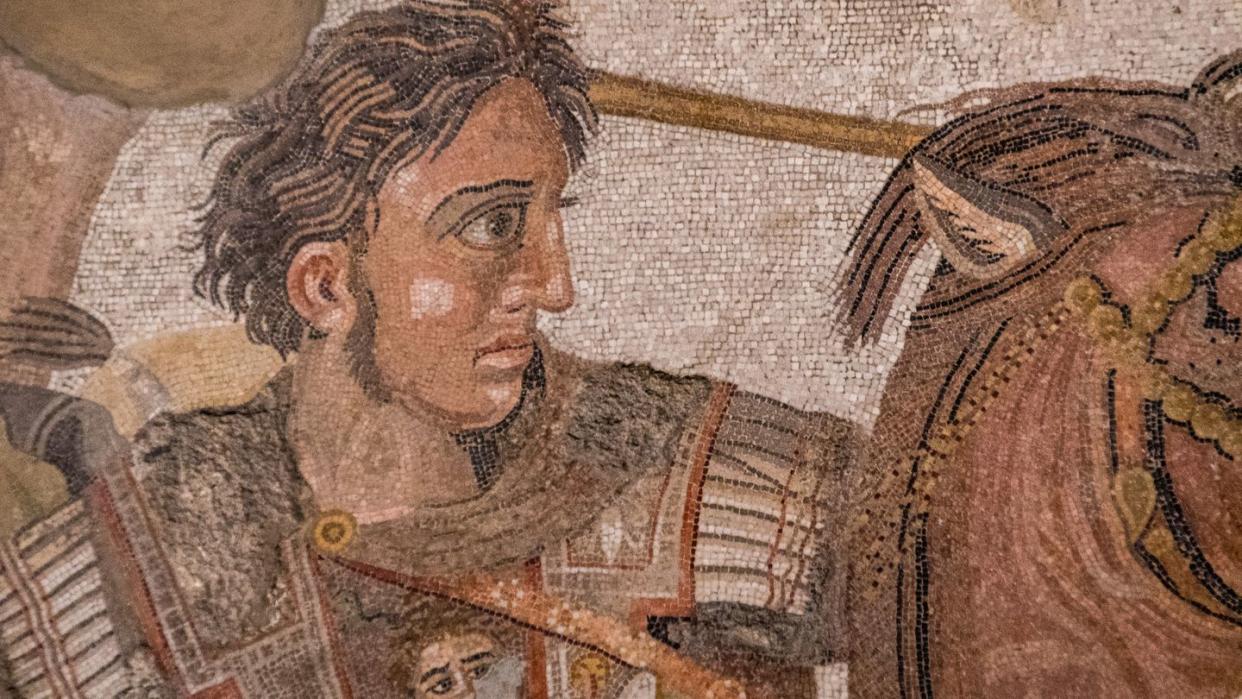Tiny Bronze Alexander the Great Portrait Found in Field in Denmark

- Oops!Something went wrong.Please try again later.
Surveyors discovered a miniature bronze portrait of Alexander the Great in a Danish field dated to 200 AD.
The roughly 1-inch-diameter likeness of the famed warrior resembles decorative pieces previously found on shields from the same period.
The bronze alloy used to create the portrait is the same as what is found in Roman statuettes.
The Romans knew a thing or two about accessorizing shields and sword belts before heading off to battle. We may have just gotten another glimpse into this historical tidbit of intrigue, after surveyors wielding metal detectors in a Danish field discovered a roughly 1-inch-diameter bronze portrait of Alexander the Great dated to 200 AD.
While the history of this exact item is full of unknowns, it may have a tie to Roman army culture from the same period. There’s simply no mistaking the portrait’s likeness to another famous fitting in Roman history, and clues from the materials themselves have links to Roman culture.
The bronze fitting (called a bracket) with the portrait of the young Greek king is cast in a lead-containing bronze alloy, according to a statement from Museum West Zealand—the same alloy the Romans used for casting statuettes. The representation of Alexander the Great is unmistakable, with the wavy locks of hair and ram’s horns by the ears. Archaeologists were able to date it to around 200 AD, and claim it is nearly identical to a silver bracket from the same period.
“It’s hard to get your arms down in excitement for the small bronze disk that shows that even the smallest archaeological objects can hide absolutely incredible stories,” Freerk Oldenburger, who has closely studied fine fittings, said in the museum’s statement. “This is a unique find in Scandinavia with connections to one of the most famous personalities in world history.”
Exactly what the bracket was used for, and where it came from, remain shrouded in mystery.
Creating a likeness of Alexander the Great to adorn a shield or sword belt became a part of the culture of tyrannical Roman emperor Caracalla, who ruled from from 198 to 217 AD and who the museum claims saw himself as a reincarnation of Alexander the Great.
A Caracalla-led battle took place near Skanderborg in Denmark, where two Germanic armies met up. Swords, bows, arrows, lances, and shields left behind after the fight were deposited in a nearby lake as sacrifices to the gods. A lake excavation showed that the shields were often decorated with disks featuring portraits of warriors in order to show off, including one identical to the portrait on the newly found item from Ringsted.
Still, Ringsted is on an island over 100 miles away. So, if this piece is from that battle, how did it venture so far?
“This was around the same time as Caracalla,” Oldenburger told Live Science. “We know that he was completely obsessed with Alexander the Great and was interested and inspired by him, since he was the greatest conqueror of that time period.” Oldenburger notes that Caracalla even dressed the same as Alexander the Great, and was once depicted with a shield containing a portrait of the conqueror.
“It’s quite a remarkable piece,” Oldenburger told Live Science. “When it showed up on my desk, I nearly fell out of my chair because it’s almost the exact same portrait as the other, but this one is a little more coarse and is made of cast bronze and not gilded silver.”
Silver or bronze, Alexander the Great’s likeness remained a feature of battlefields 500 years following his death. His likeness survived in a Danish field for another 1,800 years.
You Might Also Like

